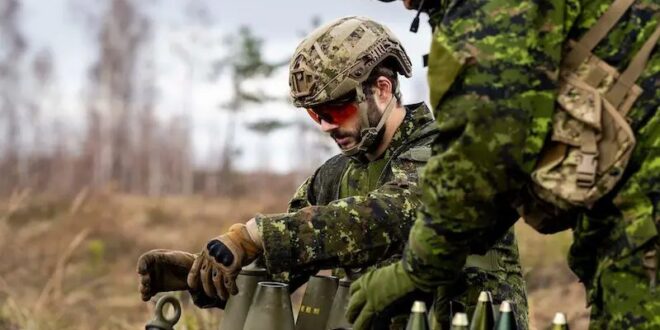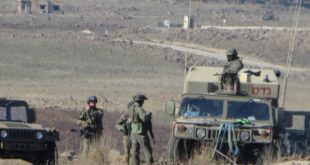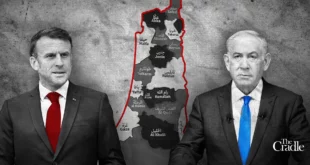The Canadian Armed Forces (CAF)-led Latvia Multinational Brigade (MNB-LVA) recently completed its first major field training exercises in a resolute show of NATO deterrence and collective defence in the face of rising tensions and uncertainty about Russia’s long term intentions. However, with the CAF grappling with significant structural challenges, many NATO allies are seeking reassurance from Canada about its ability to uphold its commitments as a reliable leader during periods of geopolitical instability.
With war drums beating on NATO’s eastern flank, particularly in the Baltics, Canada, under Operation REASSURANCE, has set about playing a leading role in the Latvia Multinational Brigade [MNB-LVA], a group consisting of detachments from 13 NATO member states, which forms part of NATO’s “Enhanced Forward Presence” (eFP) in the country. Canada first assumed the lead for the then battle group (BG) back in 2017, and NATO’s strategic evolution to an “Augmented Forward Presence” (aFP) has required transitioning from a battle group to a brigade (BDE) structure, significantly expanding Canada’s commitments. This is an ongoing process, with full operational capability (FOC) targeted for 2026.
Significant issues in procurement and maintenance
But this shift presents numerous challenges. The CAF faces structural personnel shortages and training gaps, both of which hinder its ability to meet expanded operational demands. Interoperability with the diverse forces of allied nations further complicates operations, requiring enhanced coordination and integration. Additionally, the transition demands substantial investments in equipment to meet NATO standards and operational expectations. Persistent issues around accurately estimating needs and costs exacerbate these challenges, as does the CAF’s limited human resources capacity. Colonel Vince Kirstein, Commander of Task Force Latvia, acknowledged the CAF’s limitations in this regard, noting, “Canada does not have some of those capabilities that would inherently be required in a brigade.”
A 2018 article by a serving army officer highlighted significant issues with Canada’s Leopard 2 tank fleet. At the time, only 15 to 20% of the fleet was operational, with the potential to increase to 30% with substantial effort. The article attributed these problems to a critical underestimation of the maintenance needs for the Leopard 2 tanks. Maintenance estimates had been based on experience with the simpler Leopard C1 from the earlier Leopard 1 series, leading to inadequate preparation for the more complex demands of Leopard 2.
Additional challenges compounded the issue, including a lack of qualified maintenance personnel, insufficient dedicated infrastructure for tank upkeep and overhaul, and chronic shortages of spare parts. This scarcity often led to the cannibalisation of some tanks to keep others operational, further diminishing the fleet’s effectiveness.
In early June 2023, shortly before Defence Minister Anita Anand announced the deployment of 15 Leopard 2 tanks to Latvia, CBC News published an article revealing another layer of equipment shortages faced by Canadian troops. According to the report, soldiers stationed in Latvia were purchasing their own modern ballistic helmets with integrated hearing protection, along with rain gear, vests, and belts to carry water and ammunition. The article also highlighted growing complaints about poorly fitting body armour for female soldiers. “In general, it was concerning verging on embarrassing to see the differences in issued soldier equipment between us and the Danes,” said Lt.-Col. Jesse van Eijk, the Canadian battle group commander in Latvia, in a May 12, 2023 email as reported by CBC News.
This trend of soldiers turning to commercial suppliers for higher-quality clothing and equipment is unsurprising, given the often superior options available on the market. In response to the CBC report, a Department of National Defence spokesperson acknowledged these issues and stated that efforts were underway to introduce new helmets, combat clothing, boots, and other gear in the near future.
eFP equipment needs
As Canada transitions its NATO commitment from eFP to aFP, addressing equipment needs has become a critical challenge. While some requirements are covered under Urgent Operational Requirements (UORs) and receive appropriate funding (see Portable Anti-Tank Missile Systems and Counter-Uncrewed Aircraft Systems (CUAS), significant gaps remain—particularly in artillery capabilities, which are essential for large-scale state-on-state conflicts like those involving Russian forces.
Artillery is a glaring, unfunded priority for the Canadian Army. The UORs are also seeking to procure up to twenty 155mm self-propelled howitzers, along with essential resupply equipment and ammunition. However, these plans remain unfulfilled. Canada’s current inventory of M777 towed artillery systems, which demonstrated their relevance in counterinsurgency operations against adversaries lacking comparable capabilities (a situation referred to by the military as asymmetry), is simply not suited to the context of high-intensity conflicts. Modernisation efforts need to prioritise platforms that offer both survivability and operational effectiveness on the battlefield, and in sufficient quantities to withstand loss rates that the CAF has not experienced since WWII.
Major-General Rob Dundon highlighted the ongoing debate over stock replenishment versus replacement, indicating that decisions regarding long-term capability upgrades are still unresolved. Many options are on the table, including the paradoxical one—given its unsuitability to the operational realities of facing Russia—of reopening BAE’s production lines for the M777, but such a move would require significant international demand to justify its profitability, an unlikely prospect. Each option presents unique challenges and trade-offs in terms of cost, timeline, and operational effectiveness.
Potential solutions and interoperability testing in Latvia
The CAF face significant uncertainty about how to address these critical equipment and capability gaps in the Baltic region. However, leveraging the deployment in Latvia for testing new systems could offer valuable insights. Platforms like the K9 Thunder heavy tracked artillery or CAESAR truck-mounted howitzers—already fielded, either by Estonia or Lithuania—are potential candidates for future CAF acquisitions. These systems align with NATO standards, some of them have been successfully battle proven in Ukraine and could address Canada’s persistent artillery shortages.
General Joe Paul, Commander of the Canadian Army, described the Baltic theatre as an “amazing laboratory” for refining tactics and testing equipment. The lessons learned from operating within a multinational brigade environment could heavily influence future doctrine and procurement decisions. This collaborative setup allows Canada to evaluate not only its own capabilities but also how its systems integrate with those of its allies.
Interoperability, however, presents its own challenges. Effective coordination across Slovak, Polish, and Canadian forces, for instance, requires harmonising artillery and fire support doctrines. Differences in procedures and equipment can lead to significant risks during live operations. Major Matt Stickland, 1 RCHA Battery Commander, underscored the potential for mistakes, emphasising the catastrophic consequences of miscommunication or procedural mismatches during combat. “It has been a challenge to make sure we have a common understanding. While there are NATO TTPs and STANAGS (standardization agreements) for everything we do within the artillery, sometimes the interpretation of these by different counties in their language makes a difference,” he said. “With artillery, those differences in procedures when you are shooting a round 20 kilometres down range can have a big impact on making sure that round lands on target.”
Testing allied systems like the K9 Thunder and CAESAR would also provide critical data for Canada’s Indirect Fire Modernisation project. This initiative aims to replace the aging M777 towed artillery with more agile, modern platforms capable of withstanding high-intensity conflicts. Such testing in Latvia would directly contribute to identifying solutions that enhance both operational readiness and compatibility with NATO standards.
The deployment in Latvia highlights the CAF’s pressing equipment and personnel challenges. Addressing these issues requires a dual focus: investing strategically in modernisation and leveraging interoperability testing with NATO allies. By aligning its systems and practices with those of allied forces, Canada can ensure greater operational effectiveness in the Baltic region. Success hinges on closing gaps in artillery capabilities and refining joint operations to maintain credibility and readiness in an increasingly volatile geopolitical landscape.
 Eurasia Press & News
Eurasia Press & News



